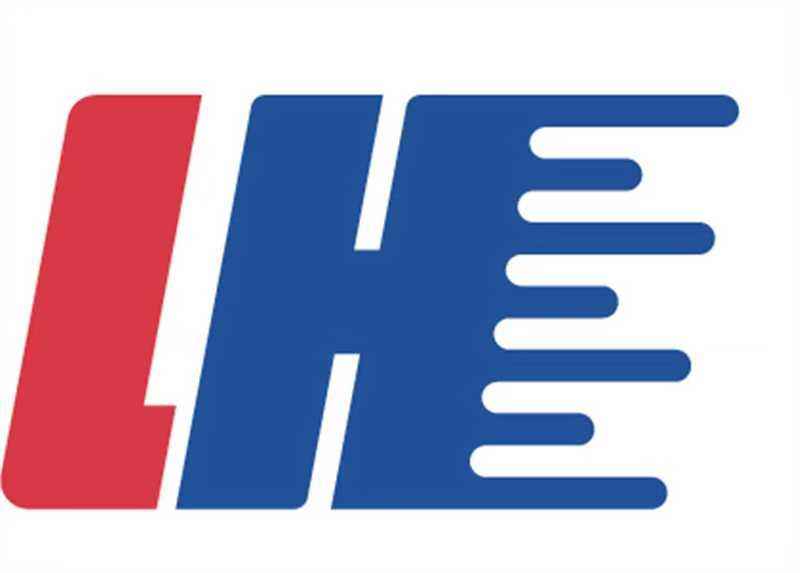ວິທີທີ່ເຄື່ອງມືວັດແທກຄວາມຕ້ອງການອົກຊີເຈນຊ່ວຍໃນການປົກປ້ອງສິ່ງແວດລ້ອມ
ບົດບາດຂອງການວັດແທກ BOD ໃນການປົກປ້ອງລະບົບນິເວດ
ການເຂົ້າໃຈຄວາມຕ້ອງການອົກຊີເຈນຊີວະພາບເປັນຕົວຊີ້ບອກມົນລະພິດ
ຄວາມຕ້ອງການອົກຊີເຈນຊີວະພາບ (BOD) ແມ່ນມາດຕະຖານສໍາຄັນຂອງຄຸນນະພາບນ້ໍາ ທີ່ຊ່ວຍປະເມີນລະດັບມົນລະພິດອິນຊີຂອງສິ່ງແວດລ້ອມນ້ໍາ. BOD ວັດແທກປະລິມານອົກຊີເຈນລະລາຍທີ່ຈໍາເປັນຕໍ່ການສືບພັນຂອງສິ່ງມີຊີວິດໃນນ້ໍາເພື່ອແບ່ງສິ່ງມີຊີວິດອິນຊີ ແລະ ເປັນຕົວຊີ້ວັດມົນລະພິດທີ່ສໍາຄັນ. ຄ່າ BOD ສູງມັກຈະສະທ້ອນໃຫ້ເຫັນເຖິງການມີຢູ່ຂອງມົນລະພິດອິນຊີໃນປະລິມານຫຼວງຫຼາຍ ສົ່ງຜົນໃຫ້ອົກຊີເຈນຫຼຸດລົງ ແລະ ສົ່ງຜົນກະທົບຢ່າງຮ້າຍແຮງຕໍ່ຊີວິດສັດນ້ໍາ. ຕາມການສຶກສາທີ່ເຜີຍແຜ່ໃນວາລະສານ Scientific Reports, ລະດັບ BOD ທີ່ເພີ່ມຂຶ້ນມີຄວາມສໍາພັນກັບການຫຼຸດລົງຂອງຄວາມຫຼາກຫຼາຍຂອງສາຍພັນນ້ໍາຍ້ອນວ່າພະລັງງານອິນຊີທີ່ເພີ່ມຂຶ້ນເຮັດໃຫ້ອົກຊີເຈນຫຼຸດລົງ ເຊິ່ງເປັນສິ່ງຈໍາເປັນຕໍ່ການດໍາລົງຊີວິດຂອງສິ່ງມີຊີວິດໃນນ້ໍາ ແລະ ການຮັກສາຄວາມຫຼາກຫຼາຍຂອງຊີວະພາບ.
ຄວາມສຳພັນລະຫວ່າງມົນລະພິດອິນຊີ ແລະ ການເສື່ອມໂຊມຂອງລະບົບນິເວດນ້ໍາ
ມິນິ້ມົນລະພິດທາງອິນຊີມີສາເຫດໃຫ້ລະດັບ BOD ສູງຂຶ້ນ, ສົ່ງຜົນໃຫ້ລະບົບນິເວດນ້ຳຖືກທຳລາຍ. ພົບຫຼັກຖານຈາກການສຶກສາຄົ້ນຄວ້າຕ່າງໆ ສະແດງໃຫ້ເຫັນເຖິງຄວາມສຳພັນທີ່ແໜ້ນໜາລະຫວ່າງລະດັບມິນິ້ມົນລະພິດທາງອິນຊີສູງກັບຄວາມບໍ່ດຸ່ນດ່ຽງຂອງລະບົບນິເວດ. ຕົວຢ່າງເຊັ່ນ: ການເຂົ້າມາຂອງສານອິນຊີເຮັດໃຫ້ລະດັບອິກຊີເຈນຫຼຸດລົງ, ສົ່ງຜົນເສຍຕໍ່ປາ, ພືດນ້ຳ ແລະ ສັດປ່າອື່ນໆ. ໃນຂະນະທີ່ຄຸນນະພາບນ້ຳຖືກທຳລາຍ, ພວກສາຍພັນທີ່ອ່ອນໄຫວມີຄວາມສ່ຽງເພີ່ມຂຶ້ນຕໍ່ການສູນພັນ, ສະແດງໃຫ້ເຫັນເຖິງຄວາມຈຳເປັນໃນການຕິດຕາມມິນິ້ມົນລະພິດເພື່ອປົກປ້ອງສິ່ງແວດລ້ອມນ້ຳ.
ວິທະຍາສາດທີ່ຢູ່ເບື້ອງຫຼັງເຄື່ອງມືວັດແທກ BOD
ຫຼັກການດຳເນີນງານຂອງເຄື່ອງມືວັດແທກ BOD ທີ່ທັນສະໄໝ
ເຄື່ອງມືວັດແທກ BOD ມີຄວາມສຳຄັນຕໍ່ການກຳນົດປະລິມານຄວາມຕ້ອງການອົກຊີເຈນ ໂດຍການປະເມີນວັດຖຸດິບໃນຕົວຢ່າງນ້ຳ. ເຄື່ອງມືເຫຼົ່ານີ້ໃຊ້ວິທີການຕ່າງໆເຊັ່ນ: ການທົດສອບ BOD 5 ມື້ ເຊິ່ງກະທຳລະຫວ່າງການຟັກໂດຍຄວບຄຸມອຸນຫະພູມກ່ອນວັດແທກການບໍລິໂພກອົກຊີເຈນທີ່ເກີດຂຶ້ນ. ວິທີການດັ້ງເດີມ ເຖິງວ່າຈະມີຄວາມເຊື່ອຖືໄດ້, ມັກຈະມີຂໍ້ຈຳກັດໃນແງ່ຂອງເວລາ ແລະ ຄວາມບໍ່ສອດຄ່ອງ, ສົ່ງເສີມໃຫ້ມີການພັດທະນາເຕັກໂນໂລຊີທີ່ແທດເຈາະຈົງ ແລະ ລວດໄວຫຼາຍຂຶ້ນ. ນະວະນຳພັນໃໝ່ໆໄດ້ປັບປຸງຄວາມຖືກຕ້ອງ ແລະ ຫຼຸດຜ່ອນເວລາດຳເນີນການ, ທຳໃຫ້ເຄື່ອງມື BOD ມີປະສິດທິພາບຫຼາຍຂຶ້ນສຳລັບການວິເຄາະຄຸນນະພາບນ້ຳໃນເວລາຈິງ. ການປັບປຸງເຫຼົ່ານີ້ໃນເຄື່ອງມືວັດແທກ BOD ຊ່ວຍໃຫ້ການຄຸ້ມຄອງສິ່ງແວດລ້ອມ ແລະ ການຄວບຄຸມມົນລະພິດດີຂຶ້ນ.
ເຕັກໂນໂລຊີຫຼັກ: ເຊັນເຊີໄຟຟ້າເຄມີ ເທິຽບກັບວິທີການແສງ
ໃນການປຽບທຽບລະຫວ່າງເຊັນເຊີອິເລັກໂທເຄມີແລະວິທີການແສງ, ຈະເຫັນຂໍ້ດີທີ່ແຕກຕ່າງກັນອອກມາໃນສະພາບແວດລ້ອມຕ່າງໆ. ເຊັນເຊີອິເລັກໂທເຄມີ, ສາມາດຮັບຮູ້ການປ່ຽນແປງຂອງລະດັບອົກຊີໂຈນຜ່ານທາງວິທີການ amperometric ຫຼື potentiometric, ເຊິ່ງເຮັດໃຫ້ມັນເໝາະສຳລັບການວິເຄາະລະອຽດ. ໃນຂະນະທີ່ວິທີການແສງນັ້ນໃຊ້ການເລືອນລັງສີເພື່ອວັດແທກລະດັບ BOD ຢ່າງໄວວາ, ແຕ່ມີຄວາມລະອຽດໜ້ອຍກ່ວາເຊັນເຊີອິເລັກໂທເຄມີ. ໃນຂະນະທີ່ເຊັນເຊີອິເລັກໂທເຄມີອາດຈະມີຄ່າໃຊ້ຈ່າຍຫຼາຍຂຶ້ນແລະຕ້ອງການການບຳລຸງຮັກສາຫຼາຍຂຶ້ນ, ວິທີການແສງໃຫ້ວິທີການທີ່ໄວຂຶ້ນແລະໃຊ້ງ່າຍຂຶ້ນ. ລົງທຶນແຕ່ລະອັນມີຂໍ້ດີເປັນພິເສດ, ຂຶ້ນກັບຄວາມແນ່ນອນທີ່ຕ້ອງການໃນການນຳໃຊ້ແລະຄຳນຶງເຖິງຄ່າໃຊ້ຈ່າຍ.
ຄວາມສຳພັນລະຫວ່າງ BOD ແລະ ພາລາມິເຕີທີ່ສົມບູນເຊັ່ນ COD
ຄວາມຕ້ອງການອົກຊີເຈນທາງເຄມີ (COD) ຈະເສີມໃຫ້ BOD ໂດຍການວັດແທກປະລິມານສານເຄມີທັງໝົດໃນນ້ຳທີ່ສາມາດເກີດການອົກຊິເດຊັນໄດ້, ສະນັ້ນຈຶ່ງໃຫ້ການປະເມີນໄວກ່ຽວກັບມົນລະພິດທາງອິນຊີ. ໃນຂະນະທີ່ BOD ສະທ້ອນໃຫ້ເຫັນກິດຈະກຳທາງຊີວະພາບໃນໄລຍະຍາວ, COD ຈະໃຫ້ຂໍ້ມູນກ່ຽວກັບປະລິມານມົນລະພິດທັງໝົດ, ລວມທັງສານທີ່ບໍ່ສາມາດຍ່ອຍສະຫຼາຍໄດ້. ໃນໂຕຢ່າງນ້ຳທີ່ຫຼາກຫຼາຍ, ຄວາມສຳພັນລະຫວ່າງລະດັບ BOD ແລະ COD ມີຄວາມຊັດເຈນ, ດັ່ງນັ້ນການປະສົມປະສານຂອງຕົວຊີ້ວັດທັງສອງຢ່າງຈະເສີມຂະຫຍາຍການປະເມີນຄຸນນະພາບນ້ຳໃນທາງລວມ. ວິທີການຄູ່ນີ້ໃຫ້ມຸມມອງທີ່ຄົບຖ້ວນ, ສະໜັບສະໜູນຍຸດທະສາດການຄຸ້ມຄອງນ້ຳທີ່ມີປະສິດທິພາບຫຼາຍຂຶ້ນໂດຍການເປີດເຜີຍຂະໜາດຂອງມົນລະພິດທີ່ຍ່ອຍສະຫຼາຍໄດ້ແລະສານມົນລະພິດທີ່ຍັງຄົງຢູ່.
ການນຳໃຊ້ໃນດ້ານກົດໝາຍສຳລັບການປົກປ້ອງນ້ຳ
ຂໍ້ມູນ BOD ໃນການປະຕິບັດຕາມ ແລະ ການບັງຄັບໃຊ້ກົດໝາຍນ້ຳສະອາດ
ຂໍ້ມູນ BOD ແມ່ນເປັນອົງປະກອບສໍາຄັນໃນການຕິດຕາມກວດກາຄວາມສອດຄ່ອງກັບກົດໝາຍວ່າດ້ວຍນ້ໍາສະອາດ, ຮັບປະກັນວ່າບັນດາແຫຼ່ງນ້ໍາຕອບສະໜອງມາດຕະຖານສິ່ງແວດລ້ອມທີ່ໄດ້ກໍານົດໄວ້. ກົດໝາຍດັ່ງກ່າວຕ້ອງການໃຫ້ມີການຕິດຕາມວັດແທກລະດັບ BOD ໃນລະບົບເພື່ອກໍານົດບັນຫາທີ່ເປັນໄປໄດ້ໃນການບໍ່ສອດຄ່ອງຢ່າງຖືກຕ້ອງ. ຕົວຢ່າງເຊັ່ນ: ການທົບທວນຂໍ້ມູນຄວາມສອດຄ່ອງໃໝ່ໆສະແດງໃຫ້ເຫັນວ່າມີຈໍານວນຫຼາຍການລະເມີດທີ່ເຊື່ອມໂຍງກັບລະດັບ BOD ໃນນ້ໍາເສຍທີ່ບໍ່ຍອມຮັບໄດ້. ອົງການຕ່າງໆເຊັ່ນ ອົງການຄຸ້ມຄອງສິ່ງແວດລ້ອມ (EPA) ພິງພາຂໍ້ມູນ BOD ໃນການບັງຄັບໃຊ້ຂໍ້ກໍານົດຕ່າງໆ ແລະ ດໍາເນີນມາດຕະການແກ້ໄຂຕໍ່ຜູ້ລະເມີດ. ອົງການເຫຼົ່ານີ້ດໍາເນີນການທົບທວນ ແລະ ປະເມີນຜົນຢ່າງເປັນປົກກະຕິເພື່ອຮັບປະກັນການປະຕິບັດຕາມຄໍາແນະນໍາ, ນໍາໃຊ້ຄໍາສັ່ງປັບໝິນທີ່ເຂັ້ມງວດເມື່ອຈໍາເປັນເພື່ອຮັກສາມາດຕະຖານຄຸນນະພາບນ້ໍາ.
ການນໍາເອົາເຄື່ອງມືທົດສອບ BOD ເຂົ້າໃນມາດຕະຖານຄຸນນະພາບນ້ໍາ
ການນຳເອົາເຄື່ອງມືທົດສອບ BOD ເຂົ້າໃນການປະເມີນຄຸນນະພາບນ້ຳຢ່າງປົກກະຕິ ມີຄວາມສຳຄັນຕໍ່ການກຳນົດ ແລະ ຮັກສາມາດຕະຖານສິ່ງແວດລ້ອມໃນລະດັບສູງ. ການກ້າວຫນ້າໃນປັດຈຸບັນໃນເຄື່ອງມືວັດແທກ BOD, ຕົວຢ່າງເຊັ່ນ ເຊັນເຊີທີ່ມີຄວາມແທ້ຈິງສູງຂຶ້ນ, ຊ່ວຍໃຫ້ການຕິດຕາມກວດກາການປະຕິບັດຕາມມາດຕະຖານນັ້ນມີປະສິດທິພາບຫຼາຍຂຶ້ນ. ເທກໂນໂລຊີເຫຼົ່ານີ້ໃຫ້ຂໍ້ມູນທີ່ທັນເວລາ ແລະ ຖືກຕ້ອງ, ຊ່ວຍໃຫ້ສາມາດຕອບສະໜອງຕໍ່ກັບຄວາມຜິດສະເພາະທີ່ຖືກຄົ້ນພົບໄດ້ໄວຂຶ້ນ. ນະວັດຕະກຳໃນອະນາຄົດສັນຍາວ່າຈະເຊື່ອມໂຍງເທັກໂນໂລຊີເຂົ້າໃນຂະບວນການຄວບຄຸມຕາມກົດໝາຍຫຼາຍຂຶ້ນ, ຊ່ວຍໃຫ້ມີການບັງຄັບໃຊ້ມາດຕະຖານຄຸນນະພາບນ້ຳຢ່າງລຽນລ້ຳຫຼາຍຂຶ້ນ. ການຮັບເອົາເທັກໂນໂລຊີແບບຄ่อยເປັນຄ່ອຍໄປນີ້ບໍ່ພຽງແຕ່ສະໜັບສະໜູນຄວາມພະຍາຍາມໃນປັດຈຸບັນເທົ່ານັ້ນ, ແຕ່ຍັງເປີດທາງສຳລັບວິທີການໃໝ່ໆທີ່ດີຂຶ້ນເພື່ອຕອບສະໜອງກັບສະພາບການທ້າທາຍດ້ານສິ່ງແວດລ້ອມທີ່ມີການປ່ຽນແປງ.
ດ້ວຍການຜັນຂໍ້ມູນ BOD ເຂົ້າໃນການນຳໃຊ້ຕາມກົດໝາຍ, ພວກເຮົາສາມາດມີມູມມອງແບບອົງປະກອບໃນການປົກປ້ອງນ້ຳ ທີ່ເຊື່ອມໂຍງການຕິດຕາມກວດກາ, ການບັງຄັບໃຊ້ກົດໝາຍ ແລະ ການປະຕິບັດຕາມເຂົ້າເປັນຂະບວນການໜຶ່ງ, ຮັບປະກັນຄວາມສົມດຸນທາງດ້ານນິເວດນະວິທະຍາໃນໄລຍະຍາວ.
ເຄືອຂ່າຍການຕິດຕາມກວດກາຂັ້ນສູງ ແລະ ການວິເຄາະຂໍ້ມູນ
ການປະເມີນຄຸນນະພາບນ້ຳໃນເວລາແລະພື້ນທີ່ໂດຍໃຊ້ການວິເຄາະກຸ່ມ
ການວິເຄາະກຸ່ມມີບົດບາດສຳຄັນໃນການປະເມີນຄຸນນະພາບນ້ຳໃນໄລຍະເວລາແລະພື້ນທີ່ທີ່ແຕກຕ່າງກັນ ໂດຍການຈັດກຸ່ມຂໍ້ມູນທີ່ມີຄຸນສົມບັດຄ້າຍຄືກັນໄວ້ນຳກັນ. ວິທີການທາງສະຖິຕິນີ້ຊ່ວຍໃນການຕີຄວາມເຂົ້າໃຈຂໍ້ມູນຄວາມຕ້ອງການອົກຊີເຈນຊີວະເຄມີ (BOD) ແບບມີປະສິດທິພາບ ແລະ ສະໜອງຂໍ້ມູນເຊິ່ງຊວຍໃນການເຂົ້າໃຈກ່ຽວກັບການແຜ່ກະຈາຍແລະຄວາມເຂັ້ມຂຸ້ນຂອງມົນລະພິດໃນໄລຍະເວລາຕ່າງໆ. ຕົວຢ່າງເຊັ່ນ: ການສຶກສາທີ່ດຳເນີນຢູ່ອ່າງເກັບນ້ຳດານຈຽງເຄົາໃນປະເທດຈີນໄດ້ນຳໃຊ້ການວິເຄາະກຸ່ມເພື່ອຈັດປະເພດບ່ອນນ້ຳອອກເປັນສ່ວນຕ່າງໆ ໂດຍອີງໃສ່ຄຸນນະພາບຂອງຕົວຊີ້ວັດນ້ຳ ຊຶ່ງນຳໄປສູ່ຍຸດທະສາດການຄວບຄຸມມົນລະພິດທີ່ມີເປົ້າໝາຍຫຼາຍຂຶ້ນ. ວິທີການນີ້ໄດ້ຖືກພິສູດແລ້ວວ່າມີປະສິດທິພາບໃນການເພີ່ມຄວາມເຂົ້າໃຈກ່ຽວກັບໄດນາມິກຂອງມົນລະພິດ ແລະ ຊ່ວຍໃຫ້ການຕັດສິນໃຈໃນການຄຸ້ມຄອງນ້ຳມີຄວາມແນ່ນອນຫຼາຍຂຶ້ນ.
ການປະສົມ BOD ກັບສານອາຫານ (TN/TP) ເພື່ອຄວບຄຸມການເກີດໄພພິບັດທາງນິເວດ (Eutrophication)
ການເຂົ້າໃຈກ່ຽວກັບຄວາມເຊື່ອມໂຍງກັນຂອງ BOD, ໂລຫະໄນໂຕຣເຈນທັງໝົດ (TN), ແລະ ໂລຫະຟອດເຟດທັງໝົດ (TP) ແມ່ນສິ່ງສຳຄັນໃນການແກ້ໄຂບັນຫາການບູຮນະພາວະ, ສະພາບການທີ່ເກີດຈາກການໂຫຼດໂມງທີ່ຫຼາຍເກີນໄປ. ການບູຮນະພາວະມັກຈະນຳໄປສູ່ການເຕີບໂຕຂອງພືດນ້ຳທີ່ເປັນອັນຕະລາຍ, ການຫຼຸດລົງຂອງອົກຊີໃນຮ່າງນ້ຳ ແລະ ການເສຍຫາຍຕໍ່ລະບົບນິເວດທາງນ້ຳ. ຕົວເລກຊີ້ໃຫ້ເຫັນວ່າເກືອບ 50% ຂອງບຶ້ງນ້ຳໃນສະຫະລັດອາເມລິກາຖືກຜົນກະທົບຈາກການບູຮນະພາວະ. ໂດຍການປະສົມປະສານຂໍ້ມູນ BOD ກັບລະດັບ TN ແລະ TP, ພວກເຮົາສາມາດປະເມີນຄຸນນະພາບນ້ຳໄດ້ຖືກຕ້ອງຫຼາຍຂຶ້ນ ແລະ ດຳເນີນມາດຕະການຟື້ນຟູຄວາມສົມດຸນ. ການເຂົ້າໃຈແບບອົງປະກອບນີ້ແມ່ນສິ່ງຈຳເປັນຕໍ່ການຄຸ້ມຄອງຄຸນນະພາບນ້ຳຢ່າງມີປະສິດທິຜົນ ແລະ ການຟື້ນຟູຮ່າງນ້ຳທີ່ຖືກຜົນກະທົບ.
ການນຳໃຊ້ການຮຽນຮູ້ຂອງເຄື່ອງຈັກເພື່ອເຮັດວຽກກຳນົດແຫຼ່ງມົນລະພິດ
ເຕັກໂນໂລຊີການຮຽນຮູ້ຂອງເຄື່ອງຈັກ ກຳລັງປ່ຽນແປງວິທີການວິເຄາະຂໍ້ມູນ BOD ເພື່ອຄົ້ນຫາແຫຼ່ງມົນລະພິດ. ອັລກໍຣິທຶມເຫຼົ່ານີ້ສາມາດຈຳລອງຂໍ້ມູນທີ່ຊັບຊ້ອນເພື່ອຊີ້ບອກຕົ້ນກຳເນີດຂອງມົນລະພິດໄດ້ຢ່າງຖືກຕ້ອງ. ໃນຂະນະທີ່ພວກເຮົາກ້າວໄປຂ້າງໜ້າ ໃນບົດບາດຂອງປັນຍາປະດິດໃນການຕິດຕາມຄຸນນະພາບນ້ຳ ຈະສືບຕໍ່ຂະຫຍາຍຕົວ ໂດຍມີສາການສຳລັບການວິເຄາະຂໍ້ມູນແບບທັນທີ ແລະ ຍຸດທະສາດການຄຸ້ມຄອງມົນລະພິດແບບປັບໂຕ. ການກ້າວໂດດດ້ານເຕັກໂນໂລຊີນີ້ ຈະເຮັດໃຫ້ພວກເຮົາສາມາດຮັກສາຊັບພະຍາກອນນ້ຳທີ່ສະອາດໃນທົ່ວໂລກ.
ເຕັກໂນໂລຊີໃໝ່ໃນການຕິດຕາມຄຸນນະພາບນ້ຳ
ຄວາມກ້າວໜ້າໃນການຕິດຕາມກວດກາ BOD ແບບທັນທີ
ການກ້າວຫນ້າດ້ານເຕັກໂນໂລຊີໃນປັດຈຸບັນໄດ້ປັບປຸງຄວາມສາມາດໃນການຕິດຕາມກວດກາ BOD ໃນເວລາຈິງຢ່າງຫຼວງຫຼາຍ. ໂດຍການນຳໃຊ້ເຊັນເຊີທີ່ທັນສະໄຫມແລະເຊວພະລັງງານຈຸລິນຊີ, ພວກເຮົາສາມາດວັດແທກຄວາມຕ້ອງການອົກຊີແບບຊີວະພາບໄດ້ຢ່າງຕໍ່ເນື່ອງດ້ວຍຄວາມຖືກຕ້ອງແລະໄວຂຶ້ນ. ຕົວຢ່າງເຊັ່ນ: ແຫຼ່ງນ້ຳເຊັ່ນໂຮງງານບຳບັດນ້ຳເສຍໃນເມືອງໄດ້ສະແດງໃຫ້ເຫັນເຖິງການປັບປຸງໃນການຄຸ້ມຄອງຄຸນນະພາບນ້ຳໂດຍການຮັບເອົາເຄື່ອງມືເຫຼົ່ານີ້. ການເກັບກຳຂໍ້ມູນຢ່າງໄວວາກໍ່ໃຫ້ສາມາດຕັດສິນໃຈໄດ້ທັນເວລາ, ເຊິ່ງເປັນສິ່ງສຳຄັນໃນການຫຼຸດຜ່ອນມົນລະພິດແລະປັບປຸງຂະບວນການບຳບັດນ້ຳ.
ການປະສົມປະສານຂໍ້ມູນຈາກການສຳຫຼວດແບບໄລຍະໄກ ສຳລັບການປະເມີນຜົນໃນຂອບເຂດແມ່ນ້ຳ
ການສຳຫຼວດຈາກໄລຍະໄກ ກຳລັງມີບົດບາດສຳຄັນຫຼາຍຂື້ນໃນການປະເມີນຄຸນນະພາບນ້ຳຢ່າງລວມໝົດ. ດ້ວຍການນຳໃຊ້ຂໍ້ມູນຈາກດາວທຽມແລະເຮືອບິນ, ມັນເປັນໄປໄດ້ທີ່ຈະຕິດຕາມພື້ນທີ່ກ້ວາງໃຫຍ່ສຳລັບຄ່າຕົວຊີ້ວັດຕົ້ນຕໍ, ລວມທັງລະດັບ BOD ໂດຍບໍ່ຈຳເປັນຕ້ອງມີການວັດແທກໃນສະຖານທີ່. ການສຶກສາໜຶ່ງໄດ້ສະແດງໃຫ້ເຫັນວ່າ ການນຳໃຊ້ເຊັນເຊີຈາກໄລຍະໄກສາມາດວັດແທກຕົວຊີ້ວັດຕ່າງໆ ໄດ້ຢ່າງຖືກຕ້ອງ, ສະໜັບສະໜູນໃນການຕັດສິນໃຈທີ່ມີປະສິດທິພາບຫຼາຍຂື້ນໃນການຕິດຕາມສິ່ງແວດລ້ອມ. ດ້ວຍການກ້າວໜ້າໃນເທກໂນໂລຊີເຊັນເຊີ, ແນວໂນ້ມໃນອະນາຄົດຊີ້ໃຫ້ເຫັນເຖິງຂໍ້ມູນທີ່ຖືກຕ້ອງແລະເຂົ້າເຖິງໄດ້ງ່າຍຂື້ນ, ທຳໃຫ້ການຕິດຕາມສິ່ງແວດລ້ອມໃນຂະໜາດໃຫຍ່ມີປະສິດທິພາບຫຼາຍຂື້ນກ່ວາທີ່ຜ່ານມາ.
ເຄືອຂ່າຍເຊັນເຊີ ແລະ ການນຳໃຊ້ IoT ສຳລັບການກຳນົດການປົນເປື້ອນຢ່າງໄວວາ
ເຄືອຂ່າຍເຊັນເຊີ, ສ່ວນປະກອບທີ່ສຳຄັນໃນການຕິດຕາມກວດການ້ຳ, ໄດ້ຮັບການປັບປຸງຢ່າງຫຼວງຫຼາຍຈາກການນຳໃຊ້ IoT. ເຄືອຂ່າຍເຫຼົ່ານີ້ປະກອບດ້ວຍເຊັນເຊີທີ່ເຊື່ອມຕໍ່ກັນຊຶ່ງເກັບກຳແລະສົ່ງຂໍ້ມູນໃນເວລາຈິງ, ສະໜອງຂໍ້ມູນລະອຽດກ່ຽວກັບຄຸນນະພາບຂອງນ້ຳ. ເມື່ອເຊື່ອມໂຍງເຂົ້າກັບເຄື່ອງມືວັດແທກ BOD, ເຕັກໂນໂລຊີ IoT ສະໜອງການເກັບກຳແລະວິເຄາະຂໍ້ມູນທີ່ແທດຈິງ. ໃນຂະນະທີ່ພວກເຮົາຍ້າຍໄປຂ້າງໜ້າ, ການຮັບເອົາ IoT ຈະປະຕິວັດວິທີການຂອງພວກເຮົາໃນການກວດກາຄຸນນະພາບນ້ຳຕະຫຼອດເວລາ.

